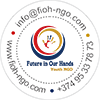Venue: Bodrum, Turkey
Duration: 1.03.20 – 30.03.20
Deadline: 20.01.20
DESCRIPTION OF THE PROJECT
The aim of the project is to support environmental protection movement and eco-friendly lifestyle by using nature art, or Land Art. During 4
weeks of the project volunteers will be working in teams on creating Land Art objects and promoting them among local population in Bodrum
drawing attention to ecological problems and environmental protection.
By designing land art objects volunteers will assist local artists, arrange logistics and locations for land art creations, collect materials for
creating land art pieces and implement the the art itself. Combining their skills and using their experience together volunteers will work towards
one common outcome of the project – Land Art Exhibition or Land Art Festival.
ACTIVITIES OF THE VOLUNTEER ALSO INCLUDE
-promotion of ESC programme by writing articles, blogposts, organizing info-events in high schools and university in Bodrum,
– taking photos or shooting videos throughout the project in order to ensure its visibility and introduce ESC Project and Land Art exhibition to
future volunteers,
– introducing their country / city and culture to local community and other volunteers by informal meetings and during intercultural nights,
– work in Bodrum Dance Club Youth Office in order to contact local and international media, find new contacts for future, promote the project in
European youth Network.
WHAT IS LAND ART?
Land art or earth art is an art that is made directly in the landscape, sculpting the land itself into earthworks or making structures in the landscape using natural materials (e.g. rocks or twigs). Land art is using natural materials such as soil, rocks, organics (logs, branches, leaves), and water with introduced materials such as concrete, metal, asphalt, mineral pigments. Sculptures are not placed in the landscape, rather, the landscape is the means of their creation. Often earth moving equipment is involved. The works frequently exist in the open, located well away from civilization, left to change and erode under natural conditions.
HISTORY
Land art emerged in the United States in the late 1960s and early 1970s. Many of the first works, created in the deserts of Nevada, New Mexico, Utah or Arizona were ephemeral in nature and now only exist as video recordings or photographic documents. The most famous land art work is Robert Smithson’s Spiral Jetty of 1970, an earthwork built out into the Great Salt Lake in the USA. Though some artists such as Smithson used mechanical earth-moving equipment to make their artworks, other artists made minimal and temporary interventions in the landscape such as Richard Long who simply walked up and down until he had made a mark in the earth. Land art appeared as: – artistic protest against the perceived artificiality, plastic aesthetics and ruthless commercialization of art; – reaction to ecological crisis; – attempt to draw people’s attention towards nature and human relations with nature. Land art was inspired by minimal art and Conceptual art but also by modern and minimal movements such as De Stijl, cubism, minimalism.
PROFILE OF THE VOLUNTEER
-volunteer has experience in performing any kind of arts, or is interested in arts and craft,
-volunteer is willing to work for environmental protection, and is committed to eco-friendly lifestyle and reasonable consumption,
-volunteer has good command of English,
-volunteer possesses experience in social media management and writing articles and blog posts,
-volunteer is interested in film making, video editing, photography.
During one month of the project volunteers will stay in a comfortable hotel. Volunteers will be also provided
with 3 meals per day (breakfast, lunch, dinner) as well as coffee breaks.
Read about first hand experience of previous volunteers
https://www.evsdiaries.com/volunteers-impressions-part-1/
HOW TO APPLY
Send your CV, Motivation Letter as well as 2 photos from your everyday life to fiohapplications@gmail.com
Title: ESC Bodrum

